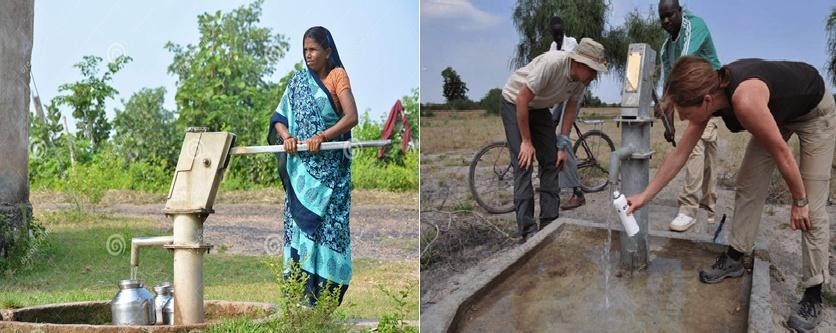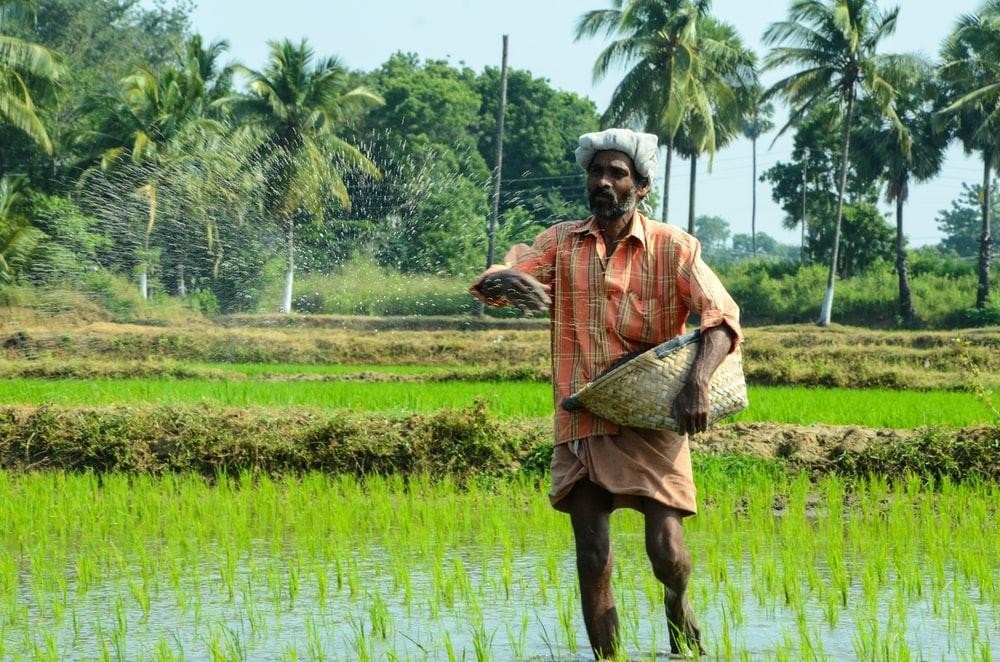For a country with nine extensive river systems that cover almost 81% of its geographical area, India’s water crisis comes across as a rude shock. The country is currently scrambling for urgent solutions with water reservoirs running dry in its major cities. What further magnifies India’s water woes is the fact that its groundwater levels are reaching dangerous levels amid tremendous pressure on it for sustaining lives, farming, industries, and for commercial and construction activity. Currently, 85% of rural and 50% of urban population is dependent on groundwater for sustenance, making India the largest groundwater user globally. As per a latest report by the Ministry of Jal Shakti,only432 BCM ( Billion Cubic Meter ) out of the total 3880 BCM of annual precipitation accounts for the total annual groundwater recharge. Further, 1186 assessment units (Block/ Taluks/ Mandal’s/ watersheds/ Firkas) in 17 States/UTs have been categorized as ‘Over-exploited’ where the Annual Ground Water Extraction is more than Annual Extractable Ground Water Resource. Water management, therefore, is the only way to treat India’s water crisis that has snowballed into a national calamity…

Enabling water circularity
One of the foundational cornerstones for water management in India is a circular water economy model that strengthens water security over time. Considering groundwater is used by various sectors of the economy such as in agriculture, industries, power, environment, fisheries, transportation, and for domestic and household usage, water ecosystems have to be made sustainable and circular. This puts the spotlight on the need to recycle and reuse sludge and wastewater for non- potable purposes, along with the prevention of the use of potable water for non- potable purposes. Staggering statistics reveal that over 80% of the world’s wastewater is released into the environment without treatment- a calamity that India cannot afford with its groundwater levels dropping at a breakneck pace.

Currently, India treats just a third of the 72,368 million liters of sewage generated in its urban areas every day. Agriculture and industries, which are major wastewater generators, need to adopt measures to stop wastewater infiltration into groundwater. As water-intensive industries that directly impact groundwater, water management facilities need to develop ways in which they can transport, treat, and recycle sewage water that can be used for non-potable purposes to ensure the prevention of groundwater usage.
To address the need for water circularity, a tertiary treatment plant has been set up at Indian Oil Corporation’s refinery in Mathura, Uttar Pradesh, to supply treated wastewater to the refinery for non-potable purposes. Further, the National Mission for Clean Ganga is also set to tie up with 11 thermal power generation units for taking treated water from their STPs for different uses. There has also been an impetus by the government to make the best use of sludge from STPs to create biogas, one instance of which is in Dinapur, Varanasi, where a 140 MLD (million liters per day) plant produces enough electricity for its needs.
The need for region-specific solutions amid varying climatic conditions
Another factor that makes it pivotal for India to redesign its water infrastructure is its climate. While groundwater exploitation is a major stressor for the country, in many states like Gujarat and Rajasthan, the arid climate adds to water scarcity. Similarly, in the south, crystalline aquifers reduce the availability of groundwater. Groundwater is also impacted by rainfall, which varies across regions across the country. This underscores the need for different water management and groundwater recharge approaches which are region-specific.
However, in India, water is a state-run subject, which means that every Indian state has the sovereign authority to discuss and solve water issues in their own way. This absence of a centralized approach that regards an entire river basin as a hydrological unit largely impacts water conservation and management and prevents the implementation of water-efficient strategies. This issue is now being partially put under the scanner with the creation of the Jal Shakti Ministry, which has been working to bring water-related programmers under the purview of one framework.
For example, the Jal Shakti ministry is in the process of designing a new National Water Policy that aims to address the need for water management and the use of water resources with a unified national perspective. The government has also proposed to set up a National Bureau of Water Use
Efficiency (NBWUE) to improve the efficient use of water across irrigation, domestic water supply and other sectors. It will also promote water-efficient equipment and appliances nationwide.
Meeting the challenges: Government & private players working towards water management
While setting up decentralized wastewater treatment facilities is the way ahead to regulate groundwater overexploitation, the cost of installation and operation, and maintenance of these systems are extremely high. As per the Centre for Science and Environment, the cost of designing a wastewater plant in India is Rs. 1 crore per million liters. Along with this, there are also other bottlenecks such as the unavailability of land to set up wastewater plants in the urban areas, power shortage, lack of skilled labor to run these plants, environmental regulations, etc. However, over the last decade, there have been significant policy decisions taken to invest in wastewater treatment across the country.
The Swachh Bharat Abhiyan put the focus on wastewater treatment with its impetus on the development of low-cost, indigenous technologies to treat wastewater in the country by collaborating with reputed institutes such as Bhabha Atomic Research Centre and Gujarat Technological University.
Some of these are Radiation Hygienisation, a process in which wastewater from households is hygienized using gamma radiation to make it fit for non-potable purposes; development of environmental isotope techniques to access contamination of surface water and groundwater; water purifiers for domestic usage; and environment-friendly plasma technologies to treat solid waste among other things.
The entry of private players into the waste management sector has also further helped to address this issue. Investments by private corporations have enabled the development of sustainable solutions for wastewater treatment. Further, it has also magnified the role of small-scale organizations and local bodies in water management, where they enable the collection, treatment, redirection, and maintenance of treatment plants.
With various stakeholders engaged towards the cause of water
management- from local-level to policy-level, the number of treatment models across towns and cities has also increased. Further, treating wastewater can be a lucrative business for private players and urban local bodies, the earnings from which can also be used to subsidize safe water for the economically weaker sections of the society. The ‘Atal Bhujal Yojana’ (Atal Jal), a Rs 6,000-crore central scheme for sustainable management of groundwater resources, thrives on this need for community participation to manage groundwater resources. Atal Jal is being implemented in 81 water- stressed districts and 8,774 gram panchayats of seven states – Gujarat, Haryana, Karnataka, Madhya Pradesh, Maharashtra, Rajasthan and Uttar Pradesh.
What does the future hold?
While the government has been a workhorse towards developing mega projects to build the country’s water infrastructure, it is no secret that the looming pressure on groundwater is likely to reach new heights amid climate variability and rising population levels. In such a scenario, it is pertinent that there is a definitive connection between water, society, and infrastructure, which is possible only through a recovery-based approach. Apart from mitigation measures like water recycling and wastewater management, people need to adopt sustainable measures across domestic, industrial, and agricultural usage. Rain-water harvesting, recharging of local water bodies, preventing water-runoff in irrigation, dam safety, and keeping track of floods and droughts is the way ahead.
In order to encourage water conservation front, the center has taken up the “Jal Shakti Abhiyan: Catch the Rain” campaign with the theme “Catch the Rain – Where it Falls, When it Falls” to cover all the blocks of all districts (rural as well as urban areas) across the country during the pre-monsoon and monsoon months. Through this, states and stakeholders can encourage communities to participate in rainwater harvesting structures. Additionally, the Central Ground Water Board has prepared its ‘Master Plan for Artificial Recharge to Groundwater – 2020’ that involves the construction of about 1.4 crore rainwater harvesting and artificial recharge structures in the country to harness 185 billion cubic meters (BCM) of water. A National Aquifer Mapping and Management programmer is also being implemented by the
Board for mapping aquifers that will help in managing groundwater.
India’s looming water crisis is one that needs to bring all stakeholders into one platform. Apart from citizens, policymakers, and the agricultural community working together towards a water-positive future, the role of corporations is now bigger than ever before in enabling water recycling and management. In this aspect, the Coca-Cola Company, a brand that has been actively propagating the need for a global shift towards the circular economy route, has been pursuing a robust sustainability agenda, with water being one of its core pillars.
Maintaining an effective water balance between the consumption and replenishment of water has been a priority for The Coca-Cola Company. In all its operations, it has sought to return water to communities through economic water usage, minimizing water wastage, recharging groundwater offtake and initiating scientific rural water management systems through watershed development and management techniques. The company ensures that all their plants are water positive where optimum waste management is a compulsory discipline in the manufacturing process and that no waste product is discharged without being properly treated. They also initiate detailed studies to enquire into the water challenges in the communities and undertake water-resource education and awareness campaigns in partnership with local stakeholders. Coca-Cola India provides support to local beneficiaries, groups and initiatives seeking to advance the water and hydration agendas as well as builds capabilities of the local and rural communities to understand the water paradigm including sources of water, methods of accessing it, depth of water, its quality and issues of sanitation, water flow points and causes of water depletion. Some of the organizations that partner with The Coca-Cola Company for these projects include Action for Food Production (AFPRO), CII Foundation, PHD Rural Development Foundation, Lupine Human Welfare & Research Foundation amongst others.
This article is Published for the benefits of our clients and stakeholders. The credit of this article goes to the author and the publisher.
